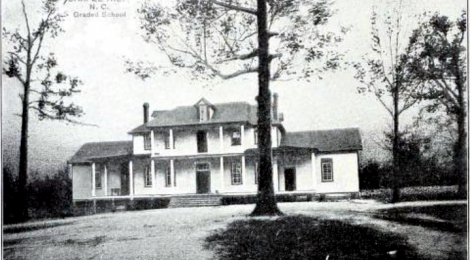
Timeline: A Century of Chapel Hill High School
What is now known as Chapel Hill High School has been called several other names over the past 100 years: Chapel Hill Graded School, Orange County Training School and Chapel Hill Junior High, for example.
Not all area residents might realize that the four large, sprawling brick buildings down off of Homestead Road have a rich and complicated history behind them, but they do. They remain a symbol of the first institution of public education for children in the district, as well as of the difficult transition from racial segregation to integration that helped fuel Chapel Hill’s prominent civil rights activity.
The history of Chapel Hill High School perhaps first begins in 1902, when Chapel Hill Public School opened on Pittsboro Street behind the Carolina Inn. White students of all grades were able to attend the school.
But the high school considers 1916 — exactly 100 years ago this year — as its founding date, when it moved to a new building on West Franklin Street on what is now Carolina Square. That same year, the Orange County Training School, which later became Lincoln High School, opened on Merritt Mill Road for black students.
In 1936, a new building for Chapel Hill High School was constructed on Columbia Street, where the UNC School of Pharmacy is now located. The building burned down in 1942, and was not rebuilt until after World War II had ended. The school then found itself back on West Franklin Street until 1966, when a new, integrated high school opened on High School Road.
As part of the Southern Oral History Program, in interview collections housed at Wilson Library, former students of Lincoln High School described what it was like when Chapel Hill High School integrated.
Burnis Hackney, a former Chapel Hill High School student, said in a 2001 interview he felt that black and white students were disciplined according to different standards during his time at the school.
“The personal conduct was secondary. The smoking, the dress, and your actions — as long as you achieved academically, and as long as you were white, everything was still okay,” he said.
“No matter what the rules are as a black person you still have a double standard.”
Rebecca Clark’s children graduated from Lincoln High School in the 1950s, but she said in a 2000 interview she remembers the reactions of black parents when Chapel Hill High School’s new building was completed. She said the administration expected many black students to stay at Lincoln, but black families put pressure on the administration to make sure their children would be allowed to attend the new facility.
“And that year, I’ll never forget: when it was time to open school, there was no blacks to go to the school so they had to put them over in the white school,” she said.
“So that’s how they integrated. They figured the blacks would not go.”


